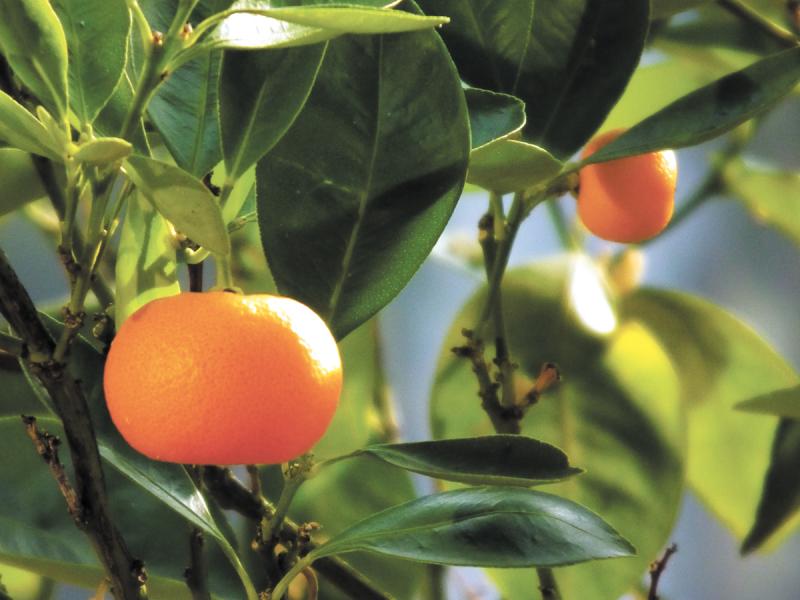While making up a story about a wizard, when asked for the name of the wizard’s home, L. Frank Baum glanced at a file cabinet with the top files marked “A-N” and the lower files marked “O-Z,” and the Wizard of Oz was born. Wizardry and sages are historically associated with the East or specifically Mandarin (from Portuguese meaning "Chinese official") whose traditional robes were a striking orange. So it takes no amount of wizardry to name the small, brilliant-orange citrus with the easy-peel skin the Mandarin orange (Citrus reticulata).
Because of their small size and the fact that they are self-pollinating, Mandarin orange trees are ideal for growing in large pots. If you have a balcony or a yard, be sure to put the pot on wheels so you can easily move the trees outdoors during the summer. If you do not have access to the outdoors, not to worry, Mandarin orange is perfectly happy spending its life indoors.
Choose a pot three times larger than the root ball of the Mandarin tree. Because they are so-called “heavy feeders,” Mandarins thrive in rich potting soil with additional compost. Be sure the potting soil drains easily and there are drainage holes in the pot. Set the tree so that it sits atop a mound of soil and spread out the roots. Be sure that the graft or bud union is not covered by soil. Water your tree regularly, letting it soak up water until the excess runs out the drainage holes. Keep the soil moist but not soggy, and let the top few inches dry out between waterings. Wet roots can rot and kill the plant.
Place your Mandarin orange near the brightest windows in your home. Rotate the tree every few weeks to help maintain its shape. The trees will benefit from grow lights, especially during the short days of winter.
For best fruiting, fertilize once every other month during the fall and winter, and once every month in spring and summer while the tree is actively growing. As your tree ages, you can slow down the fertilizing schedule and no longer fertilize during fall and winter.
Even though Mandarins are among the most cold-hardy citrus, able to survive outdoors down to 20 degrees F, when grown in pots, the roots cool down much quicker. So it is best to bring them indoors whenever the temperature goes below 45 degrees F (USDA hardiness zones 9 to 11).
When moving any potted plants from indoors to outdoors or back indoors again, you need to slowly acclimate them to the new environment so they do not go into shock. This hardening off simply means setting the tree outdoors for several hours each day, gradually increasing the amount of time the tree is outdoors until it can be left out all night. You just reverse the process to get your Mandarin used to the indoors if it has been outdoors for the summer.
So do a bit of garden wizardry and grow a Mandarin orange tree while you listen to “Mack The Knife,” because another Mandarin plays a role here. A young singer who needed a stage name noticed the neon sign at the nearby takeout Chinese restaurant had the letters M, A and N in the name "MANDARIN" unlit, so only the last five letters were showing, and thus Robert Cassotto became Bobby Darin.
























































